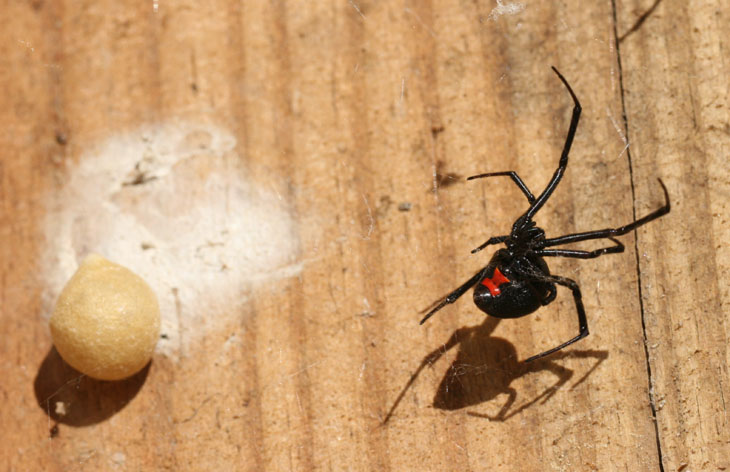I was examining the progress of the spring revival in the yard yesterday and noticing that the deer had discovered my almond tree the previous night, which means it now sports a few less leaves than it did – this occurs every few weeks in the summer and seems to do the sapling no harm at all. And then I noticed a movement near the base of the reappearing dog fennel plants, and went in for the closer look. The tale that follows is one of patience, frustration, trials, tribulations, speculations about evolution, and just plain weirdness.

This area appears to be an ideal habitat for a medium-sized species of red ant, since they’re everywhere – quite possibly Camponotus castaneus, but don’t quote me on that. They’re harmless, non-biting and non-irritating, and don’t appear to do any damage to buildings or trees, instead maintaining their colonies underground. The specimen seen here had collected a dead cranefly, and was industriously bearing it back to the colony. Curious as to where this actually was, and of course being me, I began following its progress across the yard. I was shooting a hyperactive subject in natural light, so the photo quality isn’t what I consider optimal, but they serve to illustrate the journey.

It would be accurate to say this was slow going. The ant was probably 5-6mm in length, the cranefly four times that, and the terrain a mixture of almost-bare earth and thick grasses and weeds. Getting snagged was a frequent occurrence, and here, the ant had actually determined that one of the cranefly legs was the entire holdup, and scampered down it partway to simply sever it and go on.

From time to time, the ant would release its prize and wander a short distance back and forth, no more than a centimeter or two – I’m speculating that this was seeking the strongest scent trail to carry its bounty back to the colony. Ants lay down scent trails everywhere they go, and are very sensitive to how much the scent has faded over time; the stronger trail means the one more recently traveled, which generally puts it closer to home. It’s a mixture of simplicity and probability – ants wander all over in search of food, but they can encounter the trail of another ant and follow it back readily. Since I’ve seen this occur with practically no wrong turns, I have to assume that they ability to tell age is refined down to seconds or less – they know which way to follow the trails, as if there’s a direction indicator. In fact, thinking about it now, I suspect that ants lay their trails down only when heading away from the colony, so the direction is evident.
The reuse of these trails mean that, inevitably, there will be an encounter with another ant out foraging, and the two will join forces to bring the find back to the colony. More or less.
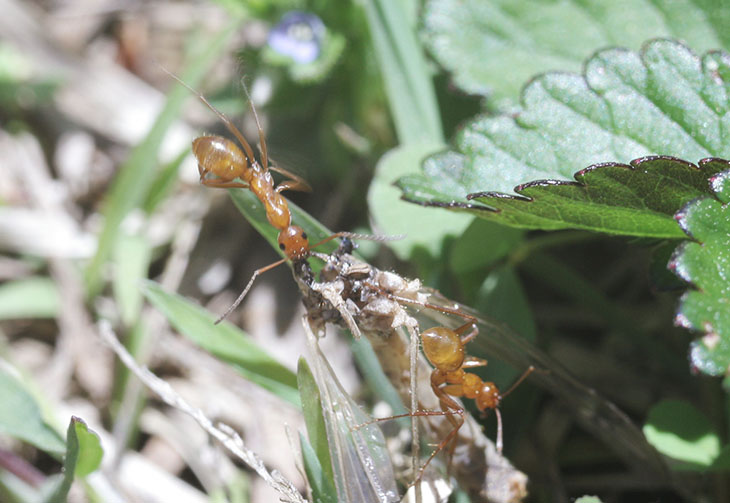
The bare truth is, with something this big and terrain this varied, it’s easy for two ants to decide on different paths around or over obstacles, and both of them take the initiative in leading the way. While both are heading in the same direction, the variations are enough to cause quite a bit of comedic fumbling. One tugging in a certain direction would often be enough to pivot the cranefly and lift the other into the air, suspended by its jaws and waving all six legs madly in an effort to gain a toehold.

Yes, these two have gone up different blades of grass and are tugging in opposite directions. Apparently nothing like letting the other take the lead, or scouting out the best path ahead, has ever evolved into ants (or at least not this species.) To all appearances, it was only because they were following the same scent trail that they managed any cooperation at all – but there was no hostility either, no possessiveness or attempt to chase off the other.
At one point, both ants stopped to examine the trail, but one made it back faster than the other, seizing the cranefly and trotting off; the second came back to find the cranefly missing, and began an agitated search of the immediate vicinity to locate it. This demonstrated how poor their vision really is, because the large cranefly was wobbling through the grasses not 3 cm away at times, but never spotted, and the slowpoke never bothered to follow the trail to catch up; the internal command seemed to be, “It was right here,” and not, “Harvey must have taken it – go find him.”

As the ant-in-possession reached the pampas grass, still mostly burnt-off stubs from the winter, it made a serious mistake: getting the body of the cranefly trapped in a small crevice, it tugged too hard on a wing and tore it off, triumphantly bearing this back to the colony (and never noticing that it was making remarkable time and not breathing half as hard now.) I had spotted the likely opening to their warren and the increased traffic among other ants, so it was only a matter of time before another discovered the cranefly lodged in the grass, fetching it out and continuing the journey.
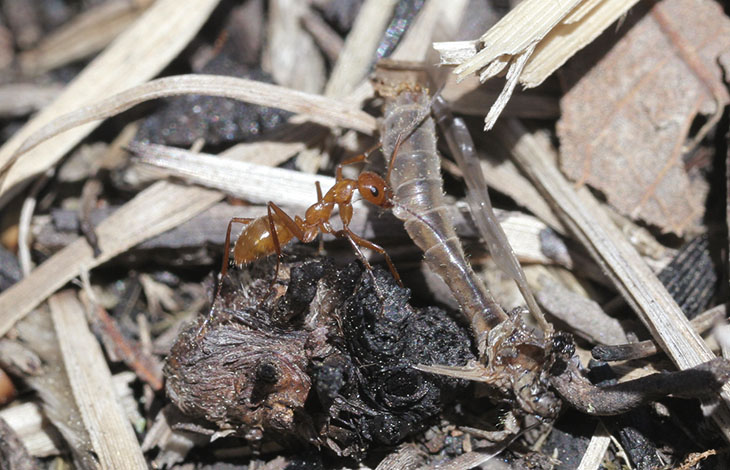
The trip had taken its toll on the cranefly, which now had no legs and only part of one wing, but the breast meat was largely intact, so still good.
As the ant neared the opening to the nest, it dropped the cranefly and began an agitated dance back and forth with a few other ants, I can only guess they were communicating something. It didn’t last long, and within moments three ants were proudly, if again somewhat erratically, bearing the prize down to the colony. And another drama in the leaves comes to a close.

The distance covered, from the time of my discovery, was better than three meters, and you can see the terrain covered in the photos. This took 45 minutes, which not only tells you the life of an ant, but the life of a nature photographer as well; now imagine what it takes to capture a species or behavior not ridiculously common. Some photographers (not me) spend days out in the field trying for the right images. It’s not just the patience that’s necessary, but the kind of mind that finds this stuff fascinating – and I’ll just leave that hanging out there for you to speculate upon…




















































 I am changing my tactics slightly with this post, in that I am announcing Earth Day early, so you can actually plan to do something or call in sick or whatever strikes your fancy. If you needed more warning than this, well, that’s your problem – get a decent calendar next year.
I am changing my tactics slightly with this post, in that I am announcing Earth Day early, so you can actually plan to do something or call in sick or whatever strikes your fancy. If you needed more warning than this, well, that’s your problem – get a decent calendar next year.

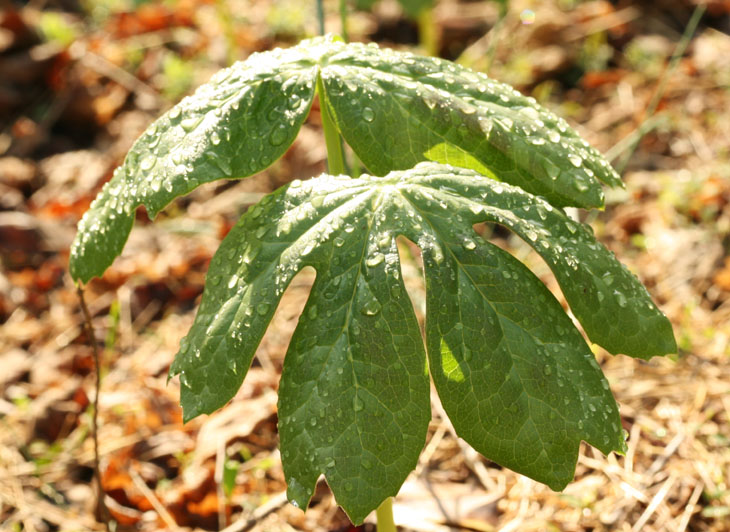
 What I have been mostly after was more detail shots of praying mantids hatching, and the park hosts several egg cases in locations I’ve memorized now. So far, no luck – one definitely displayed the debris that told me I was too late, and a couple of others seem to indicate likewise, but I’m still holding out hope I can add some nice images this year. But while there, I grabbed some other frames as I explored.
What I have been mostly after was more detail shots of praying mantids hatching, and the park hosts several egg cases in locations I’ve memorized now. So far, no luck – one definitely displayed the debris that told me I was too late, and a couple of others seem to indicate likewise, but I’m still holding out hope I can add some nice images this year. But while there, I grabbed some other frames as I explored.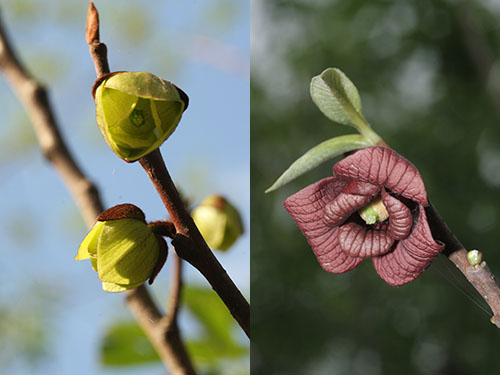 I’ll provide a couple more images of those blossoms, taken only a few days apart – if you know what these are, feel free to comment. I tried numerous different search terms for the color of the latter stages seen here and couldn’t turn up anything at all. Of course, I’m a guy, so my color vocabulary is limited – I resisted the urge to call these “beef-colored.” The leaves haven’t developed far enough yet to use as a guide, and even searching under “inverted flowers” turned up nothing that looked close. Trees have never been my thing.
I’ll provide a couple more images of those blossoms, taken only a few days apart – if you know what these are, feel free to comment. I tried numerous different search terms for the color of the latter stages seen here and couldn’t turn up anything at all. Of course, I’m a guy, so my color vocabulary is limited – I resisted the urge to call these “beef-colored.” The leaves haven’t developed far enough yet to use as a guide, and even searching under “inverted flowers” turned up nothing that looked close. Trees have never been my thing.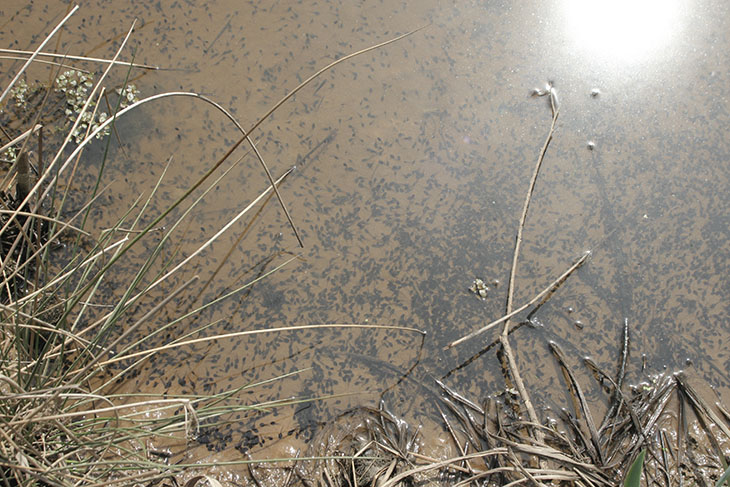
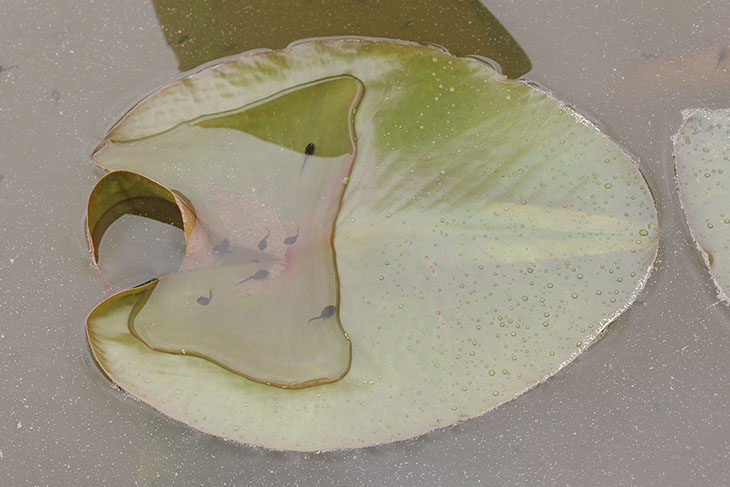

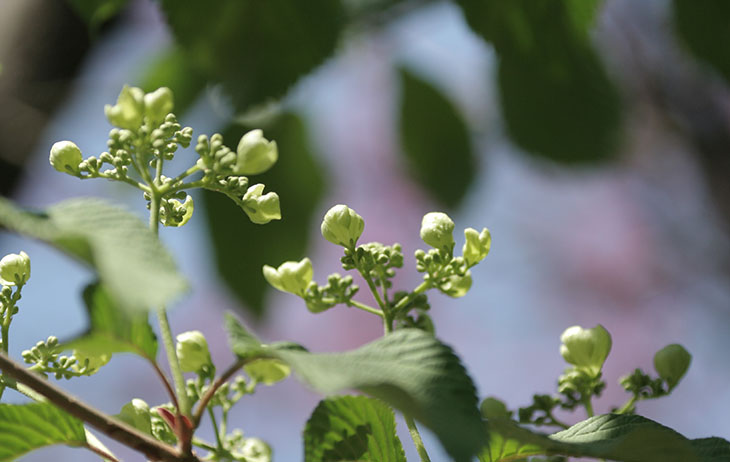
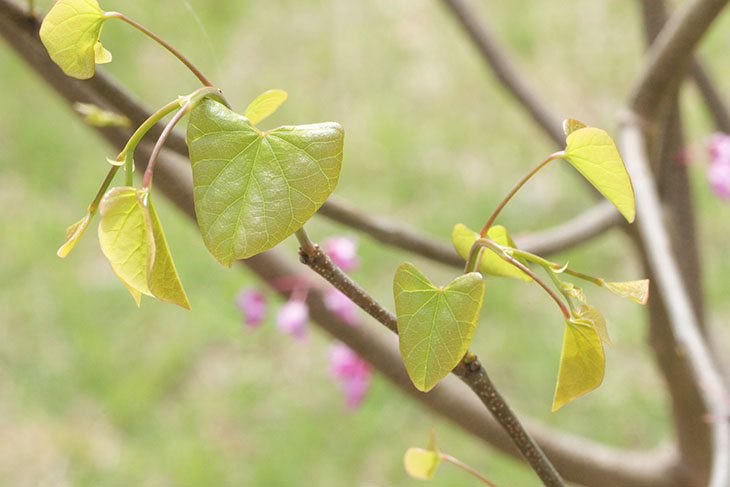
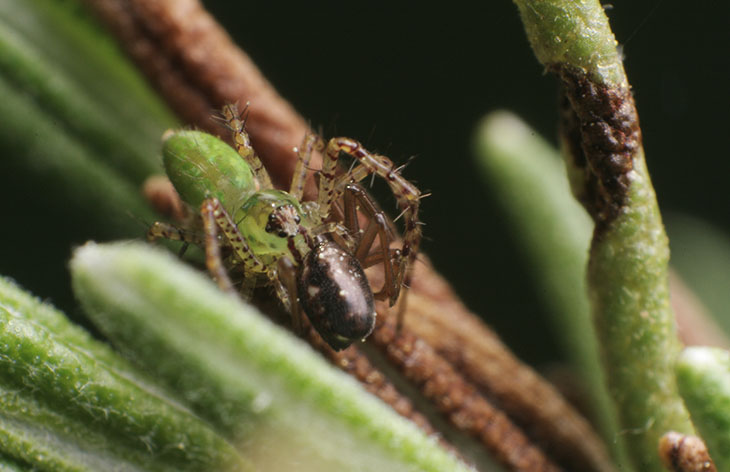

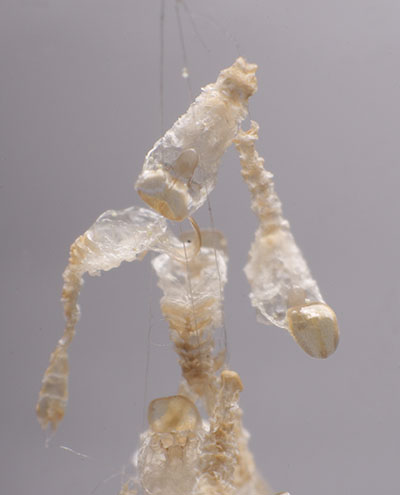 I decided to try and answer a couple of questions raised in the post about the
I decided to try and answer a couple of questions raised in the post about the 
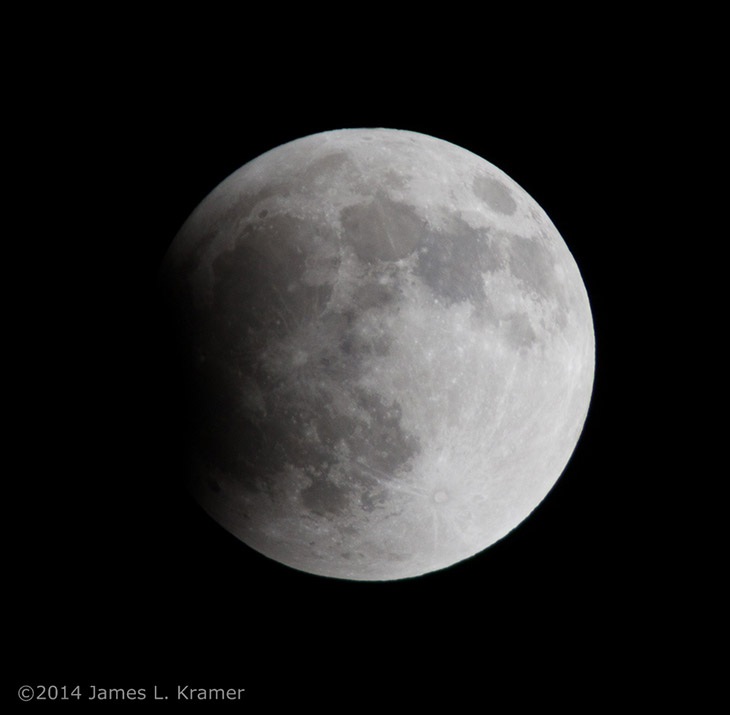

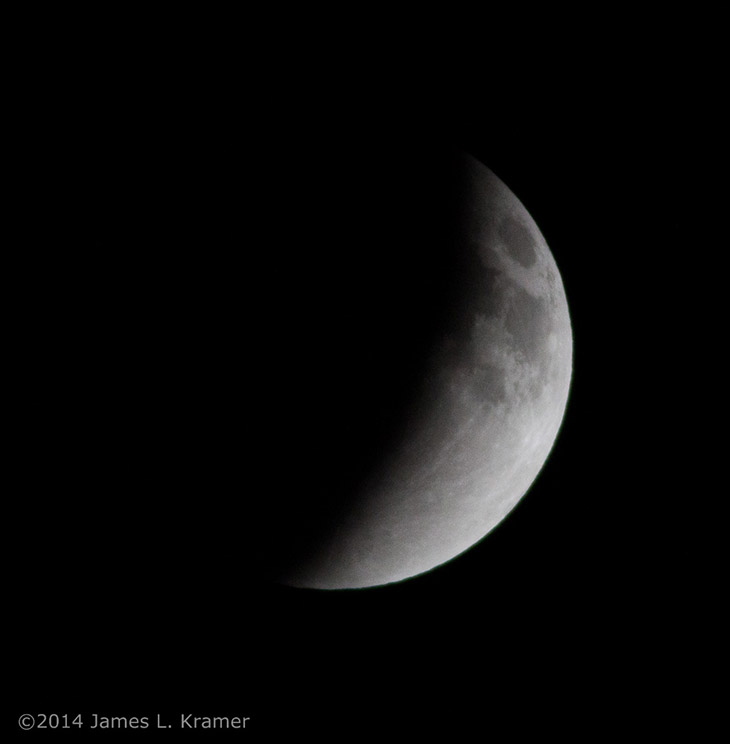


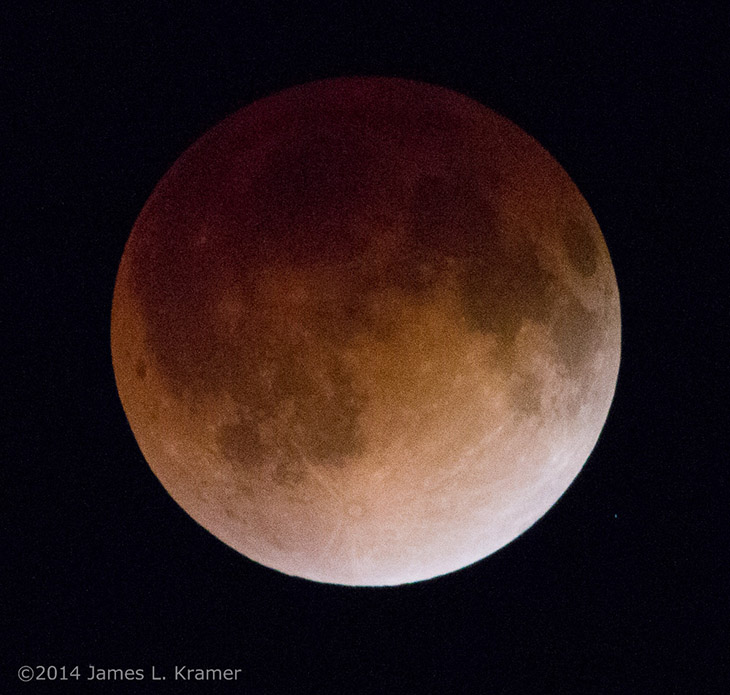
 By the way, there’s another form of light that can fall onto the moon, called earthshine, usually visible only with a thin crescent. At such times, the sun is almost behind the moon from our vantage, shining largely on Earth at the same time (meaning the Earth would be gibbous when seen from the moon.) This light is reflected off of the Earth and shines on the night side of the moon, reflected back to us here on the night side of Earth. It is, not surprisingly, quite dim, so exposure times to capture it will almost always result in blowing out the sunlit portions of the moon. The best time to capture this is with as thin a crescent as possible, and the only times to see the moon with a night sky in those phases is right after sunset, or right before sunrise, waxing or waning crescent respectively.
By the way, there’s another form of light that can fall onto the moon, called earthshine, usually visible only with a thin crescent. At such times, the sun is almost behind the moon from our vantage, shining largely on Earth at the same time (meaning the Earth would be gibbous when seen from the moon.) This light is reflected off of the Earth and shines on the night side of the moon, reflected back to us here on the night side of Earth. It is, not surprisingly, quite dim, so exposure times to capture it will almost always result in blowing out the sunlit portions of the moon. The best time to capture this is with as thin a crescent as possible, and the only times to see the moon with a night sky in those phases is right after sunset, or right before sunrise, waxing or waning crescent respectively.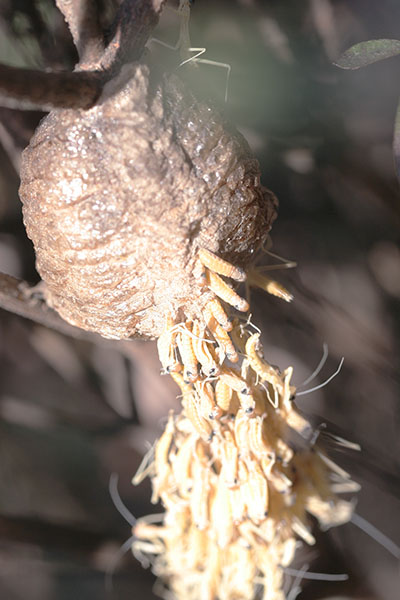 I had a post in draft form wherein I mentioned that I was keeping my eye on the
I had a post in draft form wherein I mentioned that I was keeping my eye on the 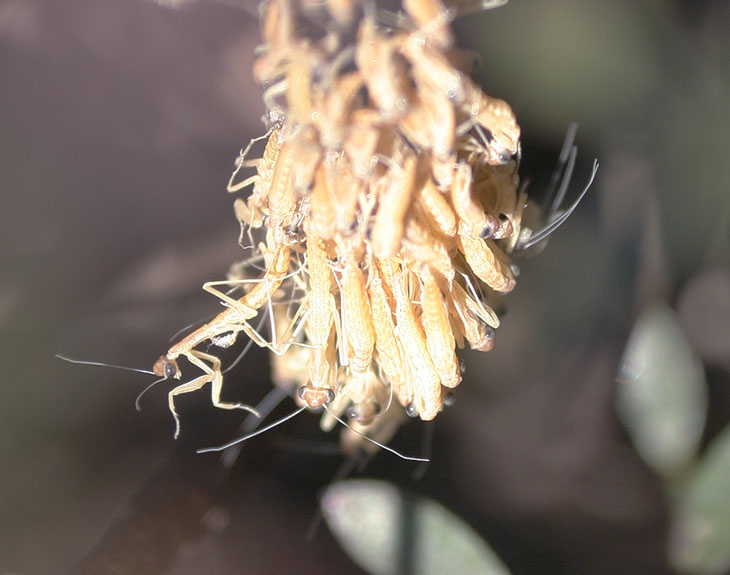
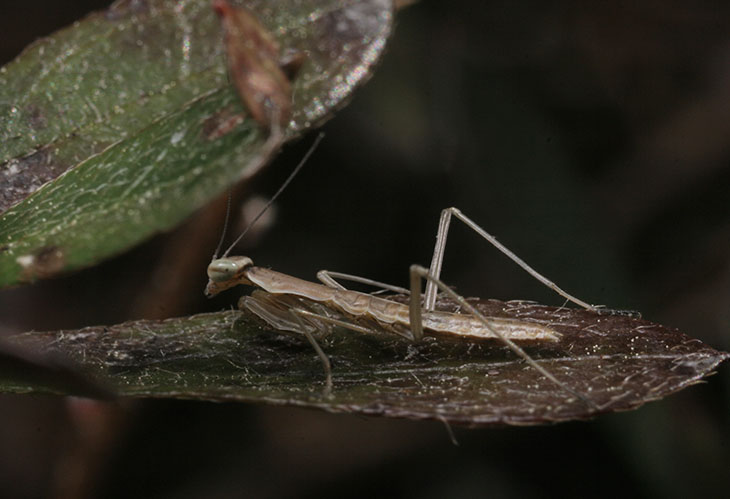
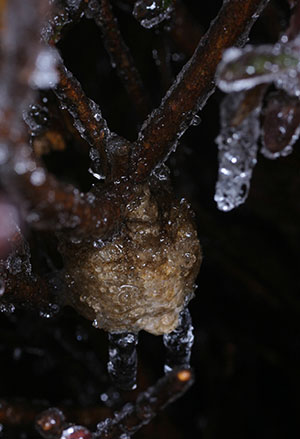 Considering that on March 7th, and again on the 18th, this egg case was coated in ice during the freezing rain storms, it’s somewhat weird that these guys are out now – not because they’ve weathered the cold, but because it doesn’t seem like winter’s actually past yet. I’m cool with all the signs of spring that are apparent now, including the first hummingbirds at the feeder, and it’s interesting to watch the ongoing family tree develop – this is the third generation of this genetic line that I’ve watched here. There are also the green lynx spiderlings still to be found, which I’ll be watching develop – most of these are a few meters away on the rosemary bush.
Considering that on March 7th, and again on the 18th, this egg case was coated in ice during the freezing rain storms, it’s somewhat weird that these guys are out now – not because they’ve weathered the cold, but because it doesn’t seem like winter’s actually past yet. I’m cool with all the signs of spring that are apparent now, including the first hummingbirds at the feeder, and it’s interesting to watch the ongoing family tree develop – this is the third generation of this genetic line that I’ve watched here. There are also the green lynx spiderlings still to be found, which I’ll be watching develop – most of these are a few meters away on the rosemary bush.